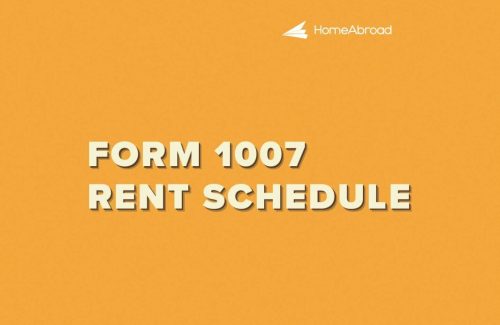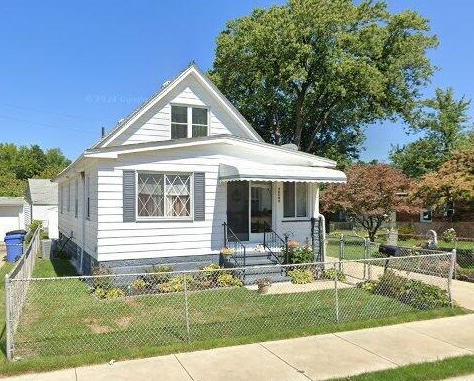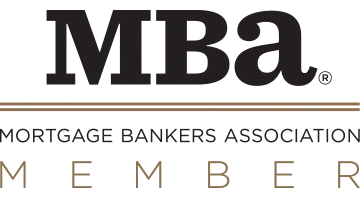The true value of a home isn’t just its price but also its income potential. Whether you’re a buyer, investor, or lender, understanding a property’s rental income is essential for making smart real estate decisions.
That’s where Form 1007 (Single-Family Comparable Rent Schedule) comes in. This form helps appraisers, lenders, and investors estimate fair market rent by comparing similar properties. It is crucial in financing approvals, investment analysis, and rental property valuation.
From my experience, Form 1007 has been invaluable in evaluating rental properties, especially when securing DSCR (Debt Service Coverage Ratio) loans. These loans prioritize a property’s income potential over the borrower’s, making rental estimates even more critical.
Let’s explore how Form 1007 works, its benefits, its role in DSCR loans, and how to optimize real estate investments with it.
Table of Contents
What is Form 1007 Appraisal?
Form 1007 is crucial in property appraisal, providing key rental property data that helps determine fair market rent and supports property valuation by comparing similar rental properties. It is primarily used by:
- Appraisers – To estimate rental value during property appraisals.
- Lenders – To assess rental income when qualifying borrowers for investment property loans, including DSCR loans.
- Investors – To gauge a property’s income potential before making purchasing decisions.
Having worked with several investors, I’ve seen firsthand how Form 1007 is crucial in assessing rental income, uncovering hidden income opportunities, and improving financing prospects.
For lenders, it ensures loan approvals are based on reliable projections rather than guesswork. For investors, it provides data-driven insights that help secure the proper loan structure and make more intelligent, more profitable decisions.
A well-prepared Form 1007 report can maximize rental income and unlock a property’s full potential.
Relevance and Purpose of Form 1007 Rent Schedule
Form 1007 plays a crucial role in property appraisals by collecting rental property information to determine fair market rent and property values. Let’s explore its relevance and recent updates:
Purpose:
- Collecting Rental Property Information: Form 1007 gathers key details such as rental amounts, lease terms, number of units, and property amenities.
- Assessing Rental Income Potential: The form ensures comprehensive data collection to help appraisers estimate a property’s rental income.
Relevance:
- Determining Fair Market Rent and Property Values: Form 1007 helps estimate fair market rent and property values based on income potential by comparing the subject property to similar rentals in the market.
- Ensuring Standardized Appraisal Methods: Some legal and regulatory entities require Form 1007 to maintain consistency and transparency in property appraisals.
- Guiding Loan Qualification: Lenders use Form 1007 to assess rental income when determining a borrower’s eligibility for investment property loans.
Understanding The Relationship Between Property Value and Rent Schedule
The value of a property is closely tied to its rental income potential. Appraisers use specific forms to analyze market rents and assess a property’s worth accurately. Form 1007 is crucial in evaluating rental properties by providing structured data on rental trends, comparable properties, and market demand.
Below, we explore three key forms used in rental property appraisal and their significance in determining property value.
Aspect | Appraisal Rent Schedule | Rental Survey Report (Form 1007) | Single Family Rent Schedule (Form 1007) |
|---|---|---|---|
Purpose | Evaluates rental income potential and market trends. | Standardized form for gathering rental property data. | Estimates market rent for single-family rental homes. |
Key Role | Helps predict income viability, assess market demand, and compare rental rates. | Ensures consistent data collection for appraisers and lenders. | Analyze rental rates of similar homes and adjust for differences. |
Who Uses It | Appraisers, real estate professionals, and investors. | Residential appraisers and lenders. | Appraisers assessing single-family rental properties. |
Data Analyzed | Rental rates, market demand, and property income potential. | Rental comparisons, property features, market rents. | Comparable rental homes, location, size, amenities, and condition. |
Impact on Valuation | Strengthens appraisal credibility and ensures accurate property valuation. | Supports lenders in assessing rental property risk and determining loan eligibility. | Provides precise market rent estimates for single-family rentals. |
Adjustments Considered | Market fluctuations, property condition, and location. | Standardized data helps lenders compare rental trends. | Adjustments were made for property size, amenities, and location to refine estimates. |
Investor Benefits | Helps evaluate potential returns and financial feasibility. | Assists in understanding fair market rent and investment potential. | Ensures investors get accurate rental income projections for single-family homes. |
How Does Form 1007 Appraisal Influence DSCR Requirements?
Form 1007 is a key tool in evaluating rental income, particularly for a Debt Service Coverage Ratio (DSCR) loan, which focuses on a property’s income potential rather than the borrower’s personal income. Residential appraisers complete this form by gathering rental market data, comparing similar properties, and estimating fair market rent, ensuring that financing decisions are backed by accurate projections.
Having worked with investors navigating DSCR loan approvals, I’ve seen how a well-prepared Form 1007 report can make or break a deal. Lenders rely on it to assess whether rental income is sufficient to cover loan payments, while investors use it to structure financing that aligns with their investment goals.
HomeAbroad specializes in DSCR loans that allow U.S. and foreign investors to secure financing based on rental income rather than employment history or tax returns. By leveraging Form 1007, investors can unlock better loan terms, qualify for financing more efficiently, and maximize returns on rental properties.
By combining Form 1007 with DSCR loans, investors gain a strategic advantage, making real estate financing more accessible and profitable.
Completing Form 1007 in 5 Minutes or Less
Form 1007 is a rental survey report that helps appraisers estimate the market rent for a property. Follow these steps to complete the form efficiently:
Step 1: Gather Property and Market Information
Collect details about the subject property, including the number of units, rent amounts, lease terms, and property amenities. Research the local rental market to find comparable properties.
Step 2: Identify Three Comparable Rental Properties
Select three rental properties that closely match the subject’s size, location, and amenities. Look for properties with similar characteristics to ensure an accurate comparison.
Step 3: Analyze and Adjust for Differences
Compare the subject property with the selected comparables, noting any key differences affecting rental value, such as property condition or additional features. Adjust rental estimates accordingly.
Step 4: Estimate the Market Rent
Determine the subject property’s market rent based on the adjusted rental data from comparable properties. Ensure the estimate reflects local rental trends and current market conditions.
Step 5: Complete the Report Accurately
Fill out Form 1007 with all necessary details, clearly presenting the subject property’s rental estimate and any significant differences affecting the valuation. If completing the form for a lender, emphasize the estimated market rent’s role in assessing the property’s income potential and loan repayment capacity.
By following these steps, you can efficiently complete Form 1007 while ensuring accuracy in estimating the property’s market rent.
Recent Changes and Industry Updates Affecting Form 1007
As the real estate market evolves, regulatory bodies and financial institutions continue to refine appraisal and rental income assessment methods. Below are key industry updates impacting the use of Form 1007.
Challenges with Short-Term Rentals (STRs)
One of the biggest challenges with Form 1007 is its limited applicability to short-term rentals (STRs) like Airbnb and VRBO. Unlike traditional rentals, STRs do not generate consistent monthly income, making applying standard rent comparison methods difficult.
Income from STRs fluctuates due to seasonal demand, local events, and occupancy rates, which can distort fair market rent estimates. Additionally, different cities and states have varying regulations on STRs, further complicating their valuation. Since Form 1007 is primarily designed for long-term rentals, appraisers and lenders are exploring alternative methods for assessing STR income.
Rental Income Qualification Updates (Fannie Mae Guidelines)
Fannie Mae has updated its guidelines for borrowers who use rental income to qualify for a mortgage on a one-unit investment property.
Form 1007 can now be used alone or with lease agreements for purchase transactions. However, refinances must be supported by additional documents such as lease agreements or tax returns. These changes ensure a more standardized and verifiable process for assessing rental income, helping lenders make more informed decisions.
HUD Requirements for Proposed Rental Income
The U.S. Department of Housing and Urban Development (HUD) now requires Form 1007 to be used alongside Form 1004 (Uniform Residential Appraisal Report) when verifying rental income.
This is particularly important for properties with little or no rental history, as it ensures fair market rent assessments are based on accurate comparisons. By enforcing this requirement, HUD aims to prevent overinflated income projections in mortgage underwriting, reducing risks for lenders and borrowers alike.
Evolving Standards for Appraisers and Lenders
With the real estate market constantly changing, appraisers and lenders must stay current with evolving rental income assessment methods.
New valuation techniques are being developed for STRs, stricter documentation requirements are being implemented, and adjustments in market rent assessments are being made to align with regulatory expectations.
These updates emphasize the importance of accuracy, transparency, and consistency in rental property valuations. Staying ahead of these developments ensures fair lending practices and reliable property appraisals.
Form 1007: Benefits, Implications, and Limitations
Form 1007 plays a vital role in real estate appraisals by helping assess a property’s rental income potential. It provides a structured way to estimate fair market rent, assisting lenders, investors, and appraisers make informed decisions. However, while it offers several benefits, it has specific challenges and limitations.
Below is a breakdown of Form 1007’s benefits, implications, and limitations:
| Benefits | Implications | Limitations |
|---|---|---|
| Reliable Rental Data: This ensures a standardized and consistent gathering of rental property information. | Accurate Property Valuations: This leads to precise home values, benefiting buyers, sellers, and lenders. | Data Reliability Issues: There is a Risk of inaccurate rental figures due to outdated or self-reported data. |
| Informed Decision-Making: Helps appraisers, buyers, and lenders assess rental potential. | Loan Approvals: Lenders use this form to determine if a property’s rental income supports mortgage approval. | Complex Rent Schedules: Adjustments for property differences make the process challenging. |
| Comparable Analysis: Analyzes similar rental properties based on location, amenities, and property condition. | Market Influence: Reliable rental data impacts market trends and investment strategies. | Not Suitable for STRs: Doesn’t accurately assess short-term rental income (e.g., Airbnb, VRBO). |
| Investor Insights: Helps investors evaluate the income potential of rental properties. | Regulatory Compliance: Aligns with Fannie Mae guidelines for standardized property valuation. | Interpretation Challenges: Some users may struggle with adjustments and market rent estimates. |
| Supports Lender Decisions: Helps determine if a property qualifies for financing based on rental income. | Appraiser’s Responsibility: Requires expertise to analyze and apply market rent adjustments accurately. | USPAP Compliance Risks: Must be completed as part of a full appraisal to meet regulatory standards. |
Form 1007 remains a critical tool in real estate appraisals, providing valuable insights into rental property values. While it enhances transparency and decision-making, users must be mindful of data accuracy, regulatory compliance, and limitations related to short-term rentals.
As real estate markets evolve, new technologies and appraisal methods may improve the accuracy of rental estimates, ensuring fair market rent assessments remain reliable and relevant.
Optimize Real Estate Investments with Form 1007
Form 1007, the Single-Family Comparable Rent Schedule, helps assess fair market rent. This is a key factor in Debt Service Coverage Ratio (DSCR) loans, which focus on a property’s rental income rather than the buyer’s personal income. Lenders use Form 1007 to ensure the rental income covers loan payments, making it crucial for real estate investors.
With HomeAbroad, securing DSCR loans and navigating U.S. real estate becomes more manageable for domestic and international buyers. Offering AI-driven property searches, tailored financing, and expert guidance, HomeAbroad streamlines the process from LLC formation to property management.
By leveraging Form 1007, DSCR loans, and HomeAbroad’s expertise, investors can confidently make informed decisions and maximize rental property returns.
FAQs
Which type of appraisal includes a comparable rent schedule using Form 1007?
The rental property appraisal includes a comparable rent schedule using Form 1007.
How is Form 1007 used in the mortgage process?
Form 1007 is used in the mortgage process to gather rental property information for property valuation and mortgage decisions.
What is a comparable rent schedule on Form 1007?
A comparable rent schedule on Form 1007 provides details of similar rental properties to estimate fair market rent.
What does an appraisal mean in renting?
Appraisal in the context of renting refers to determining the fair market rent for a property based on its characteristics and comparable rentals in the market.









![How to Find the Right DSCR Lender – Top 7 Tips [2025]](https://homeabroadinc.com/wp-content/uploads/2022/10/Find-DSCR-loan-lender.jpg)
![DSCR Loans: What It Is & How to Apply in [2025]](https://homeabroadinc.com/wp-content/uploads/2022/06/DSCR-loans-guide.jpg)













